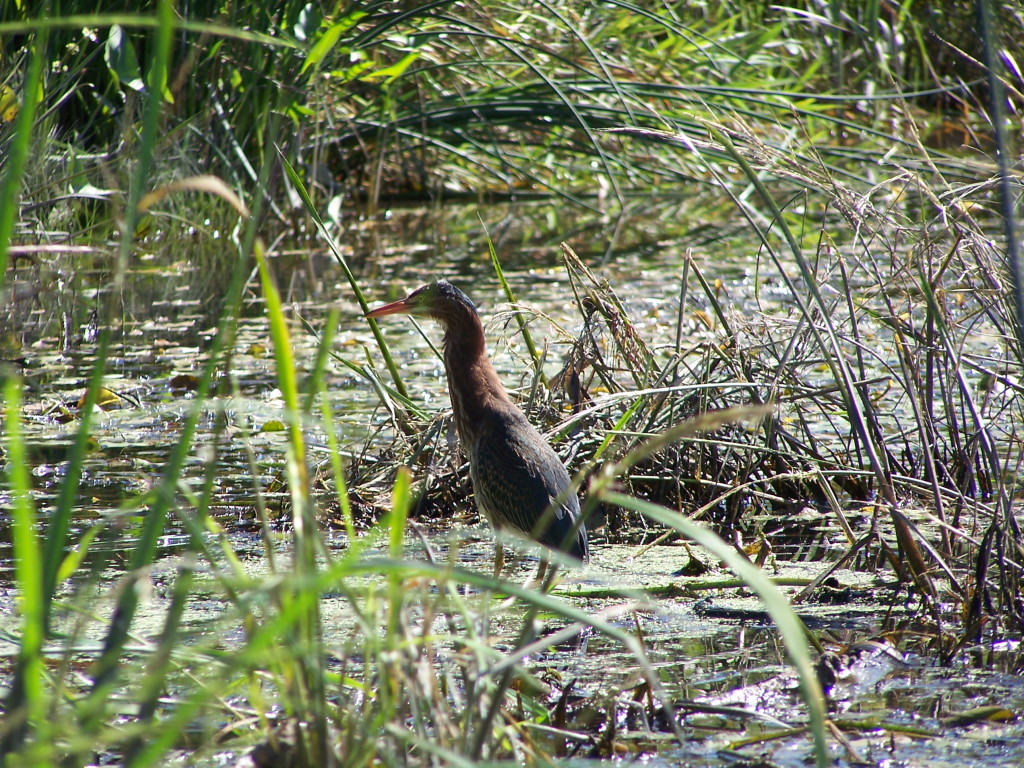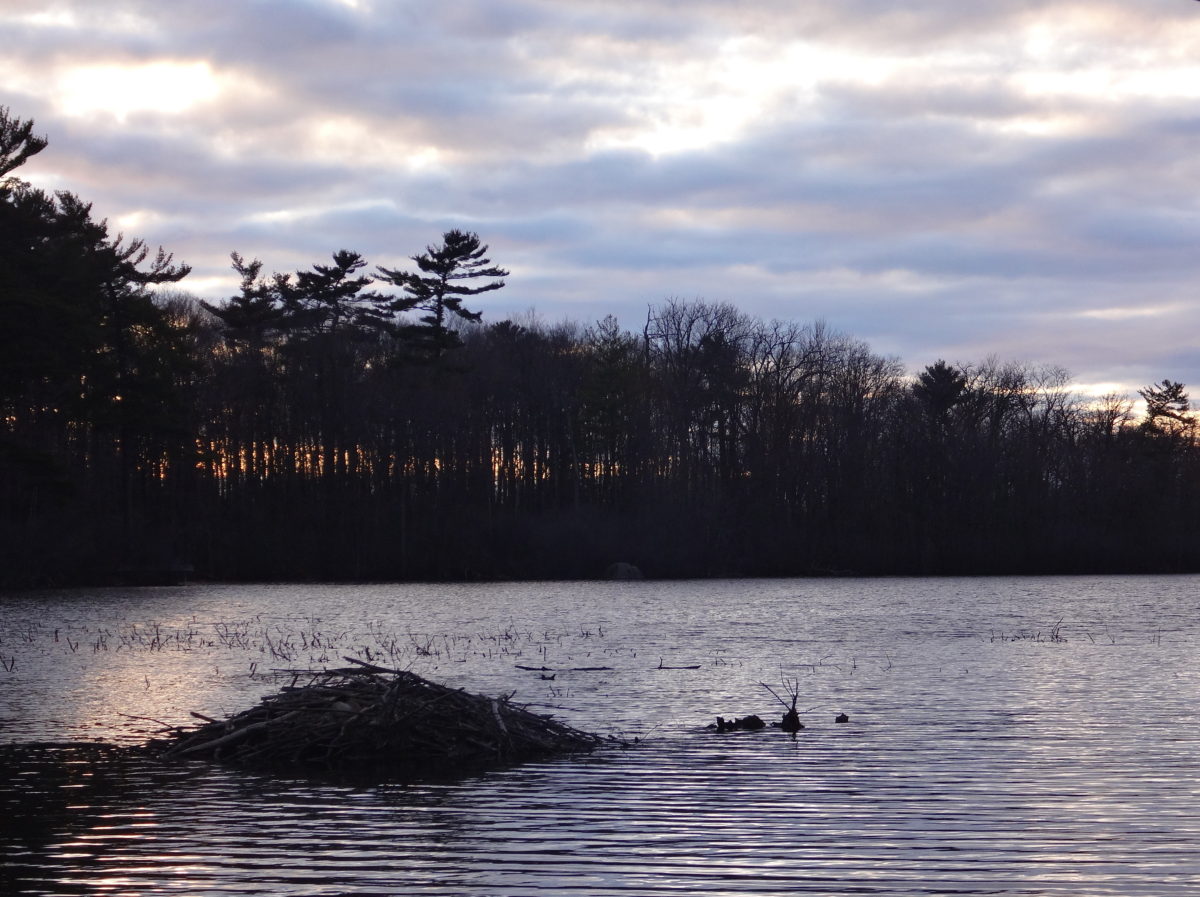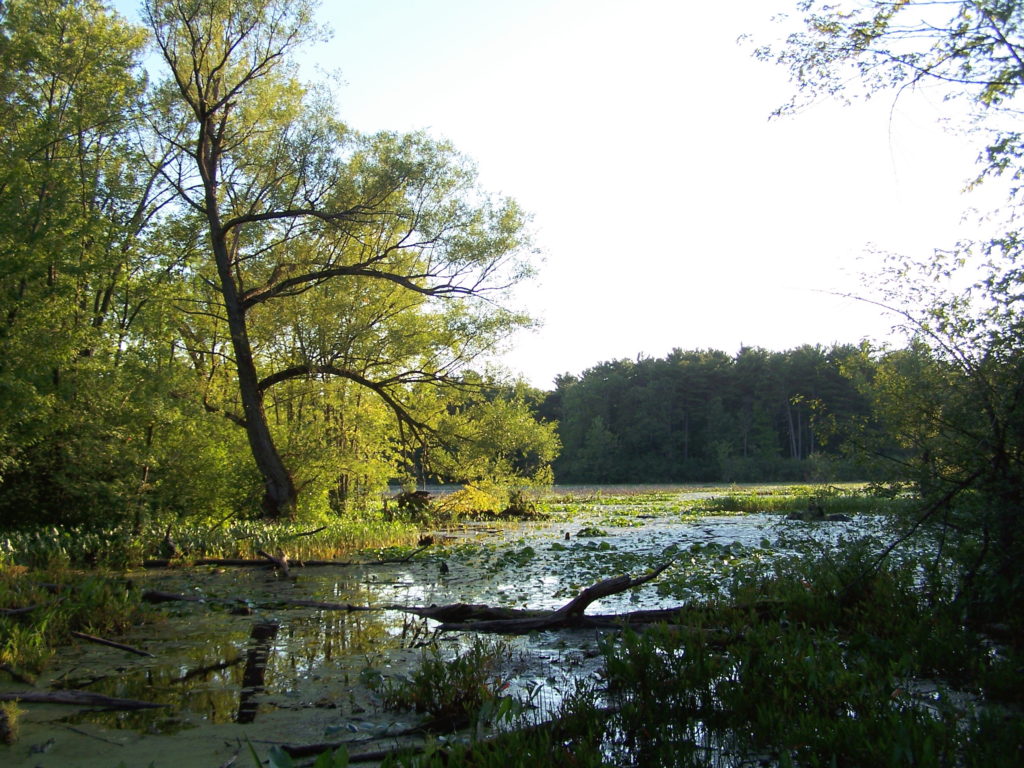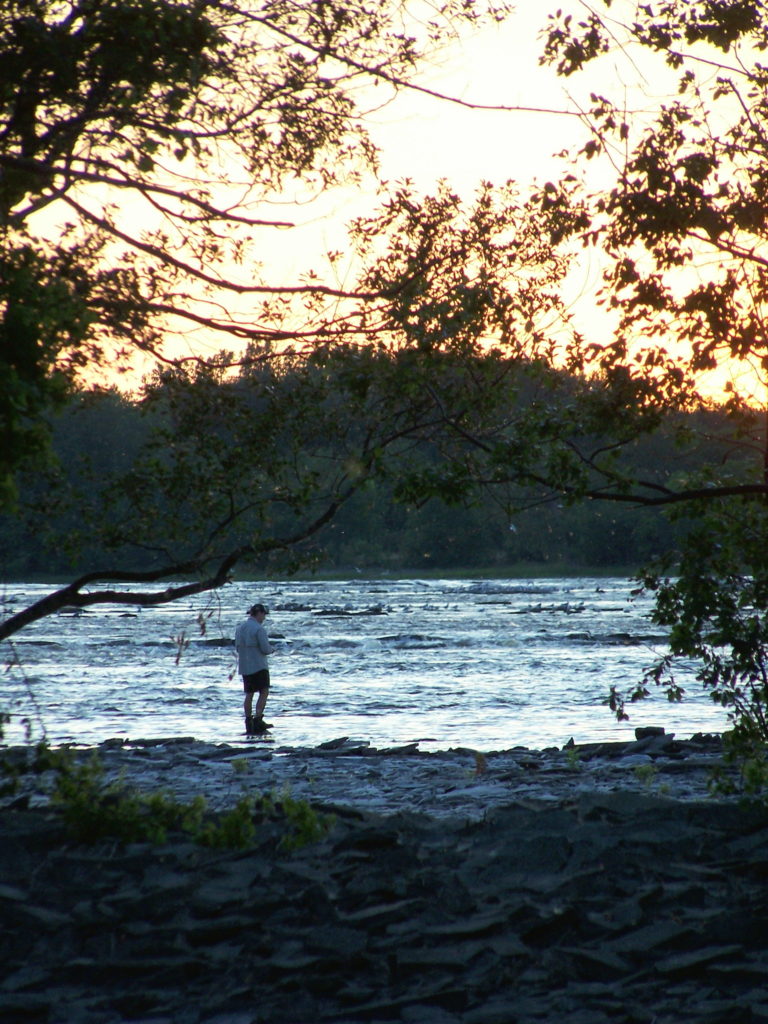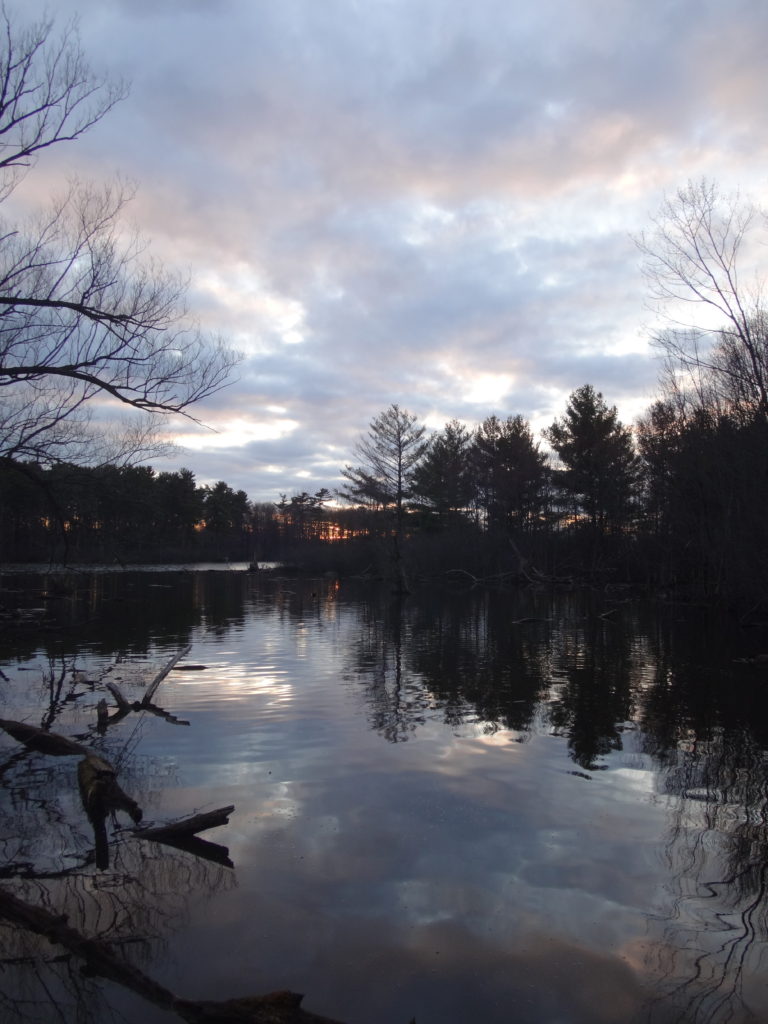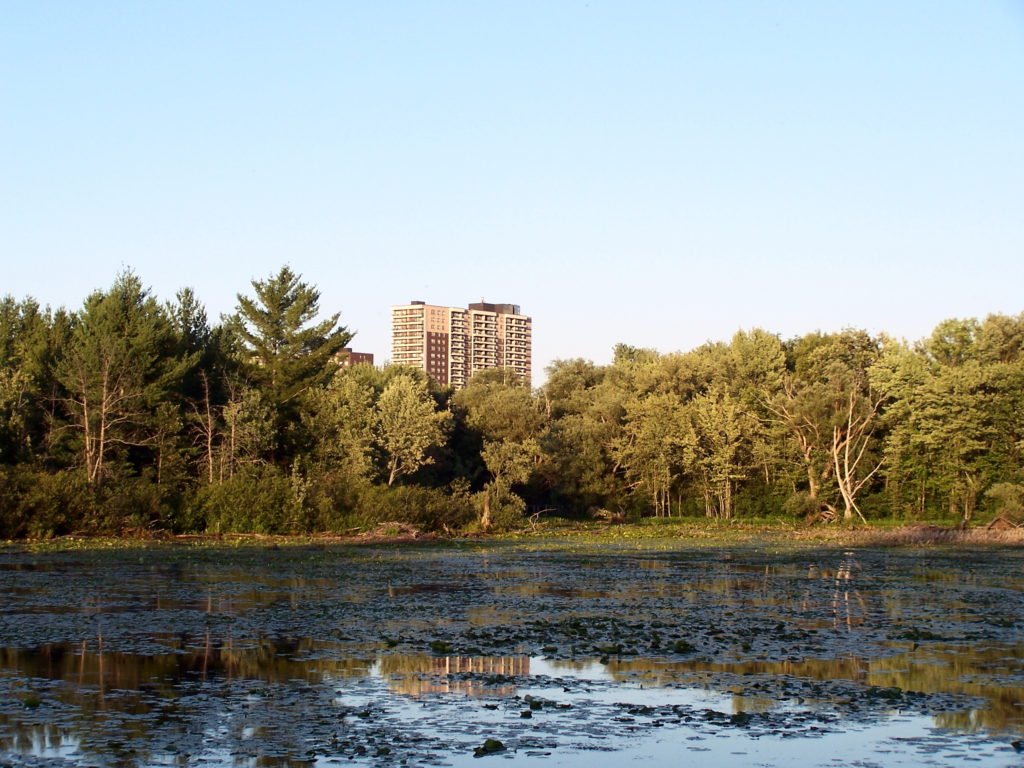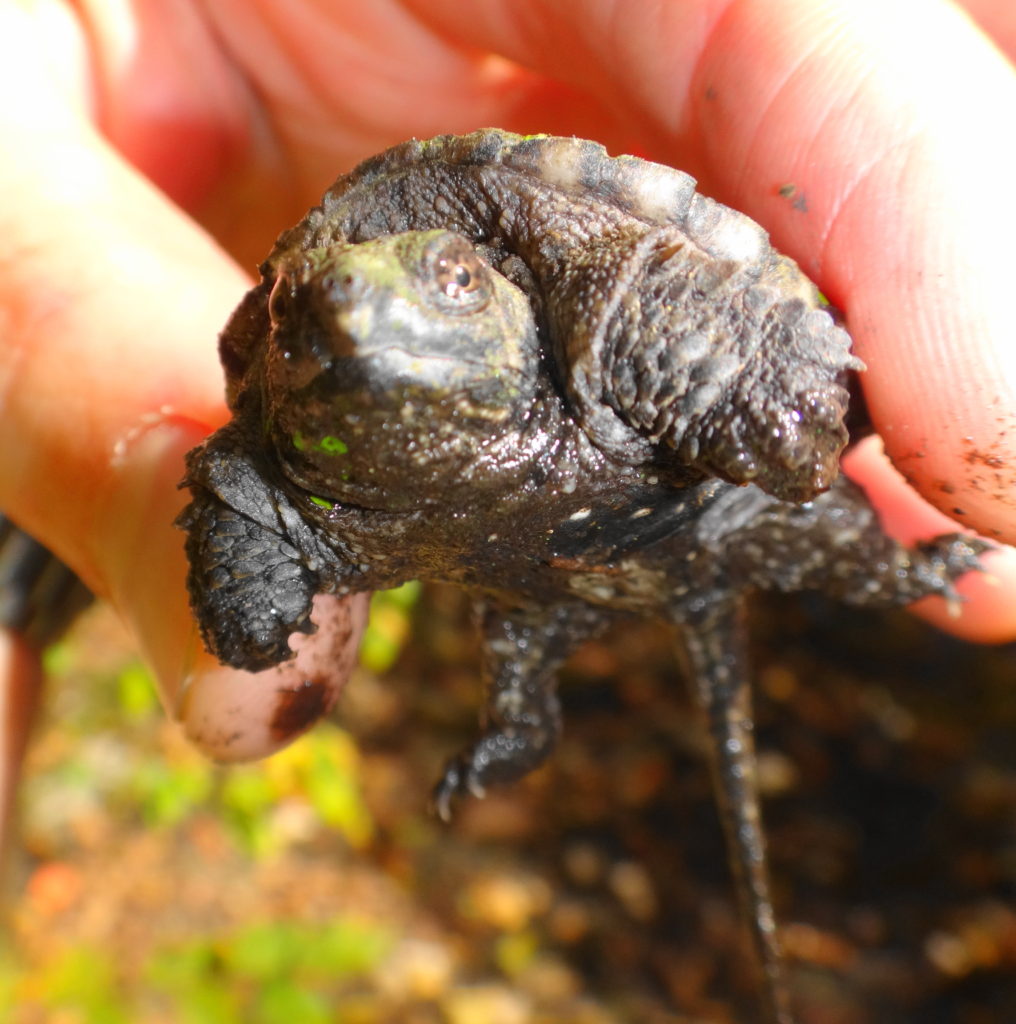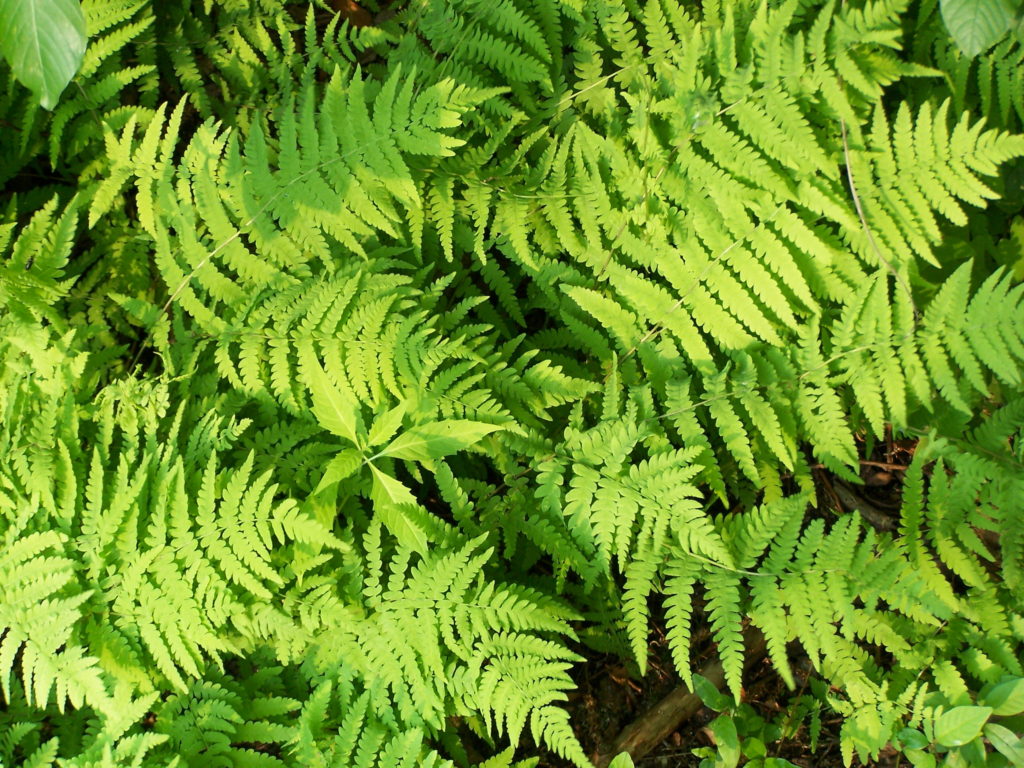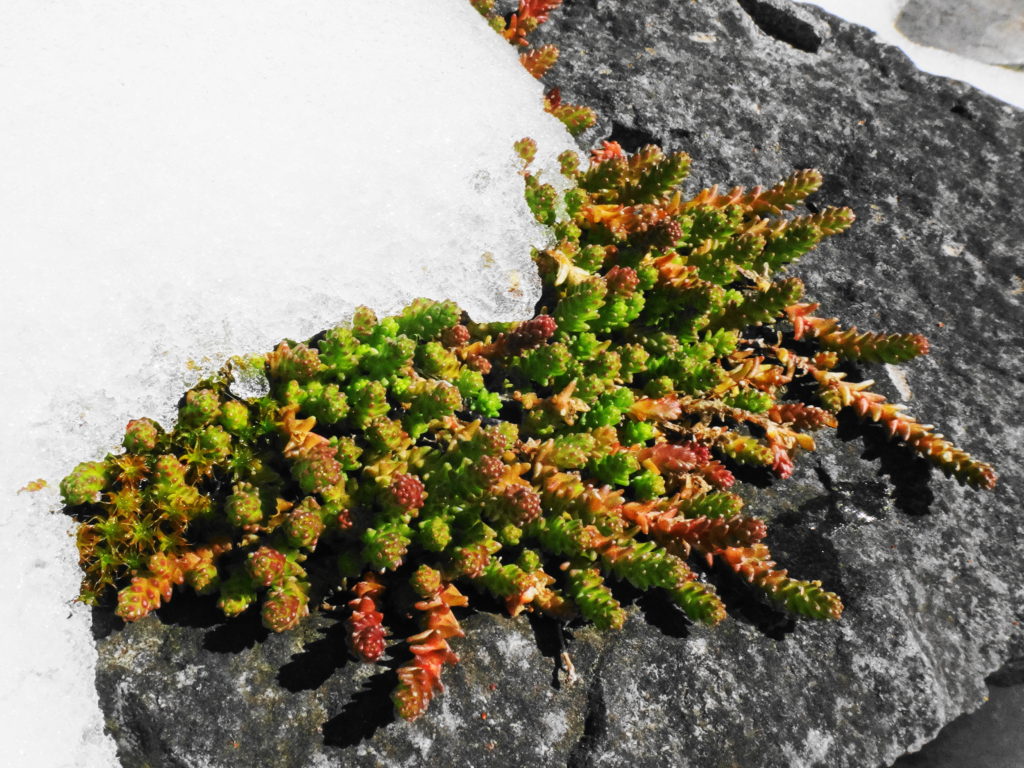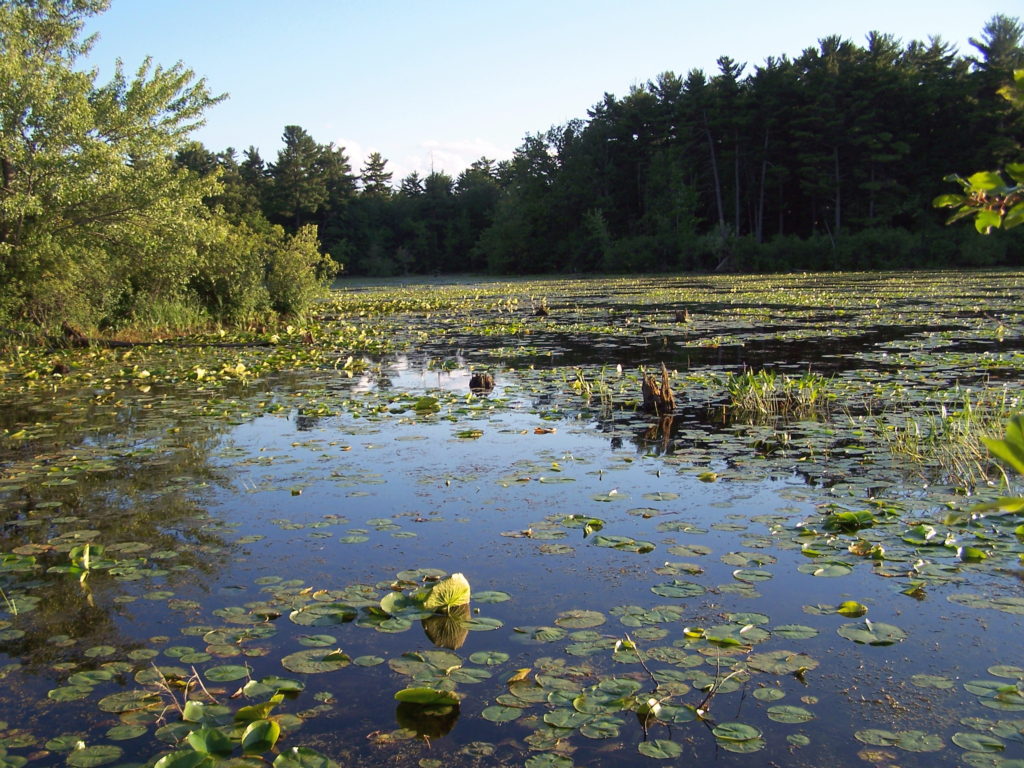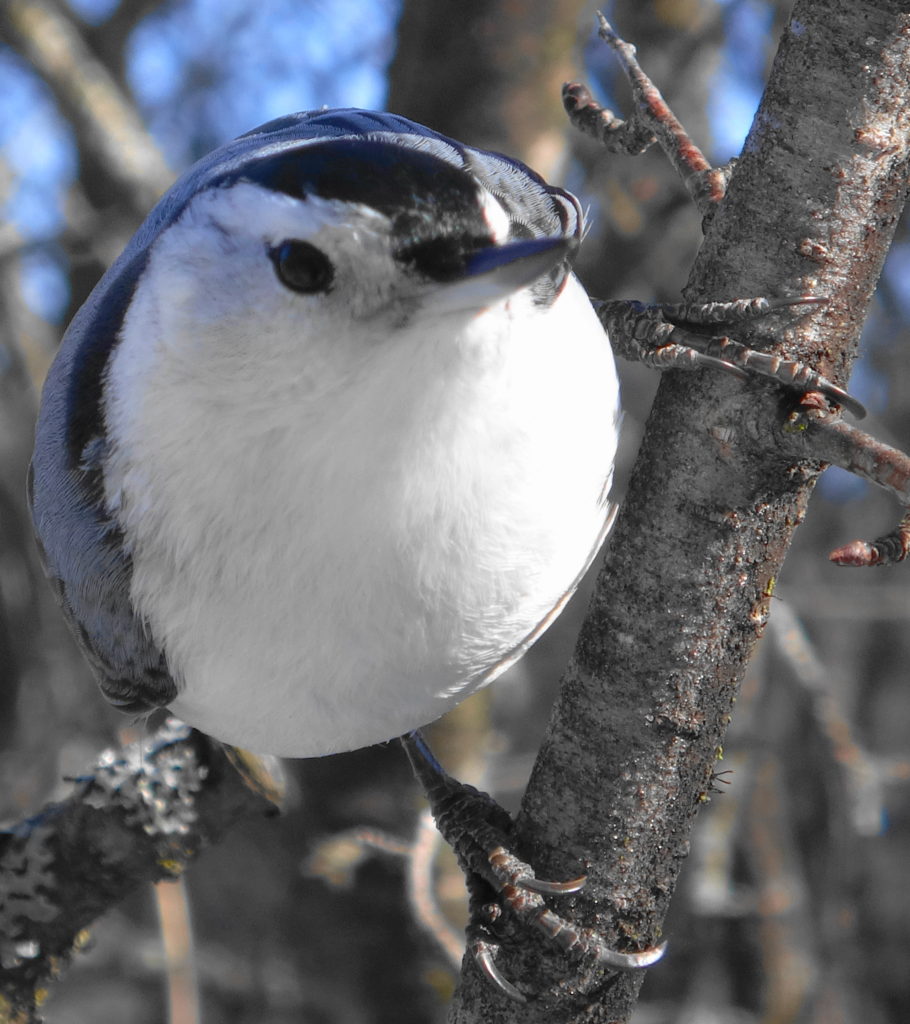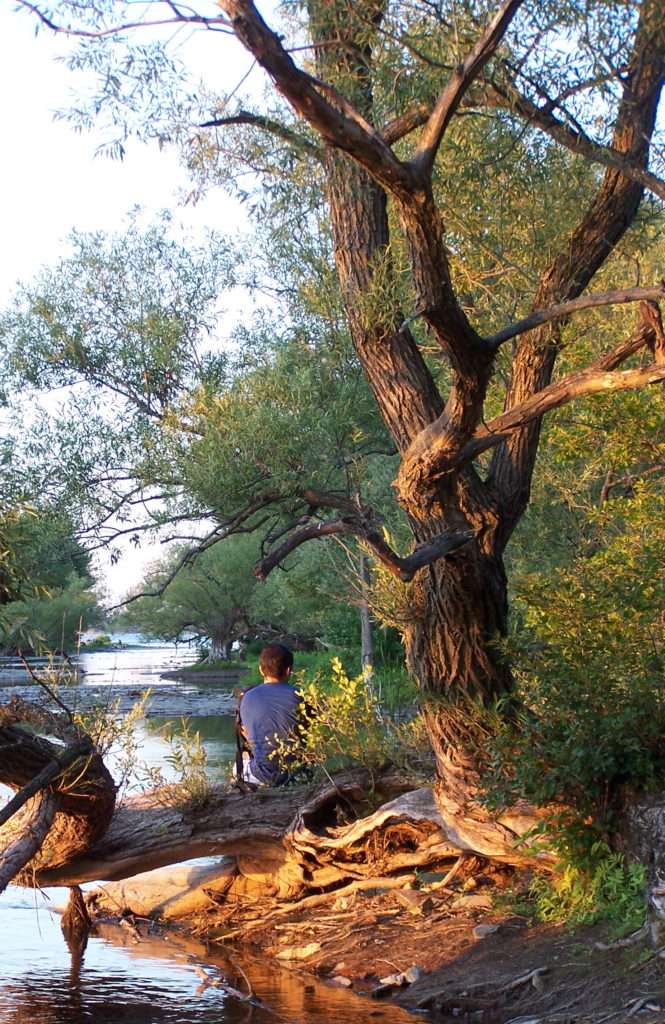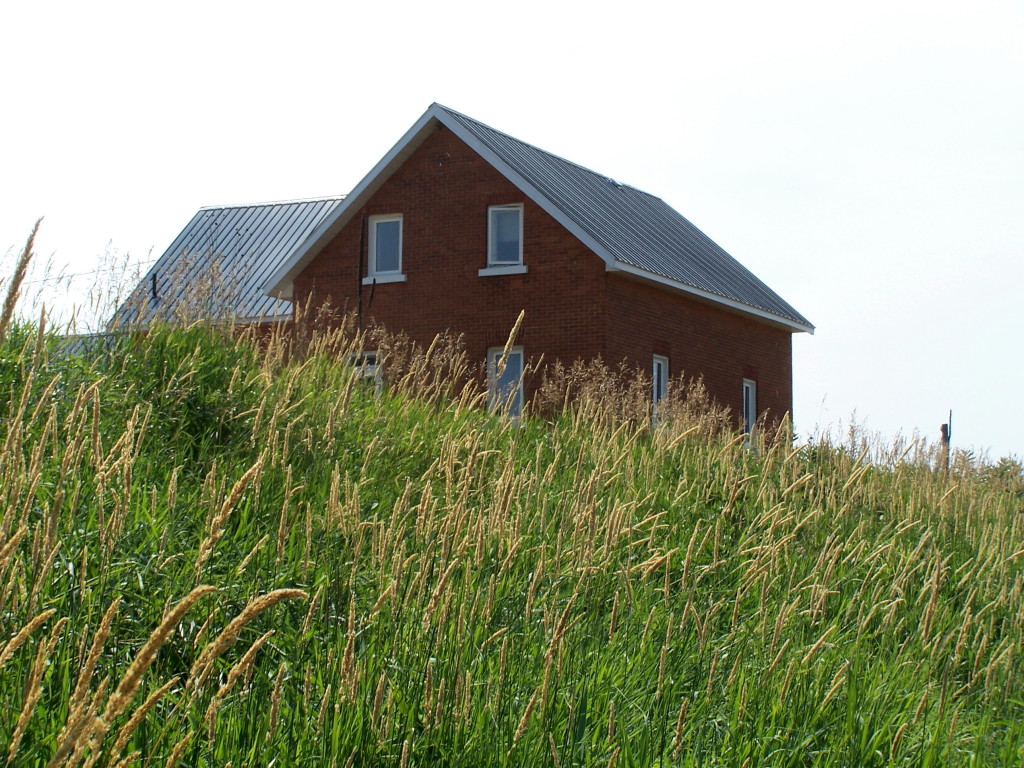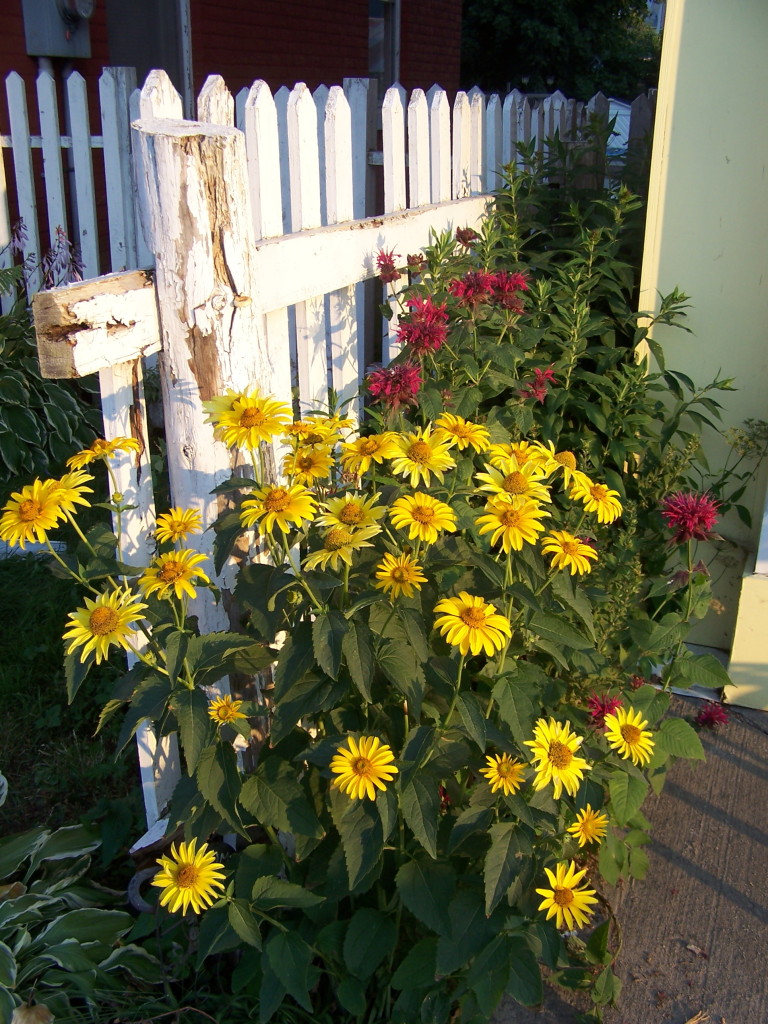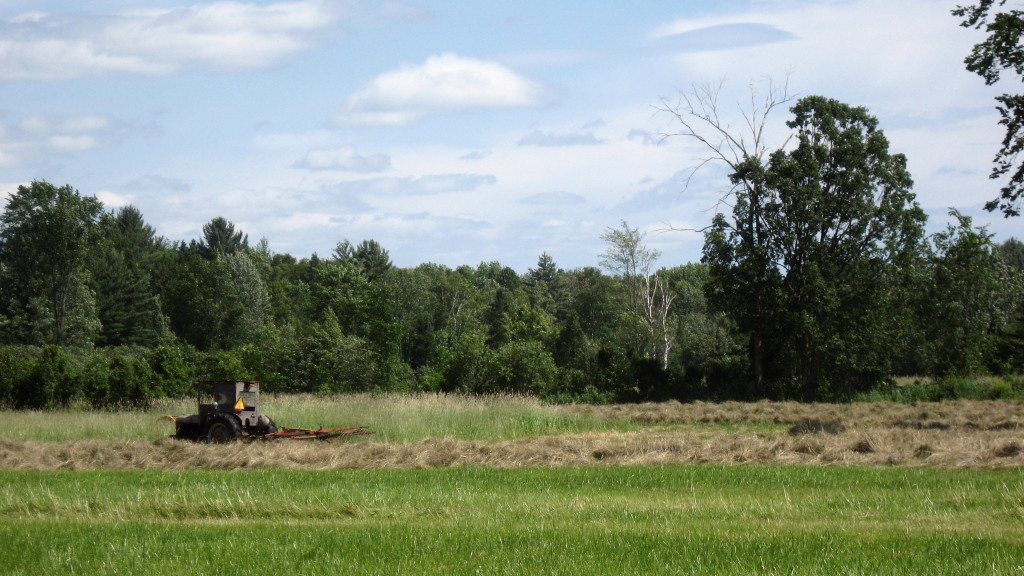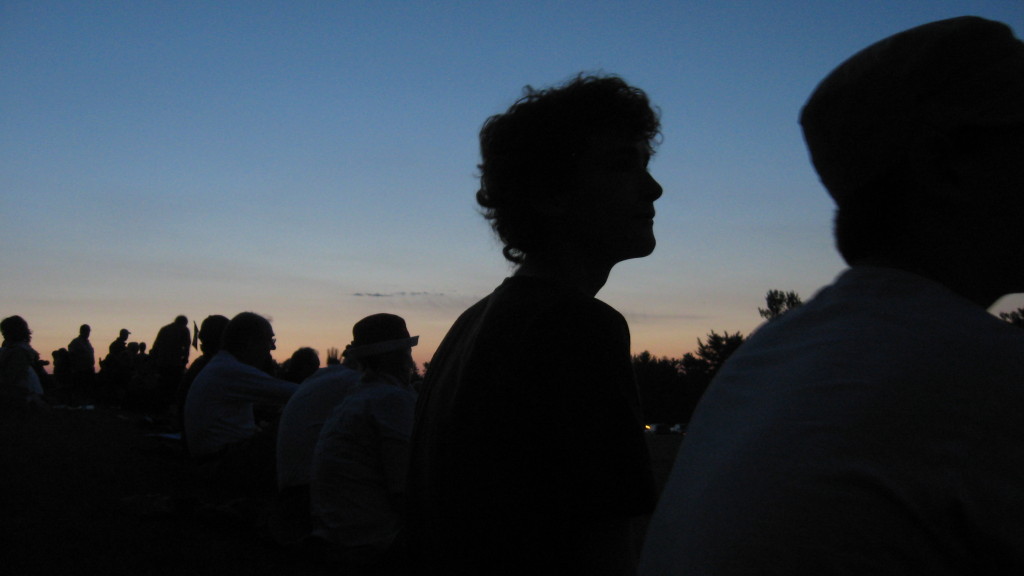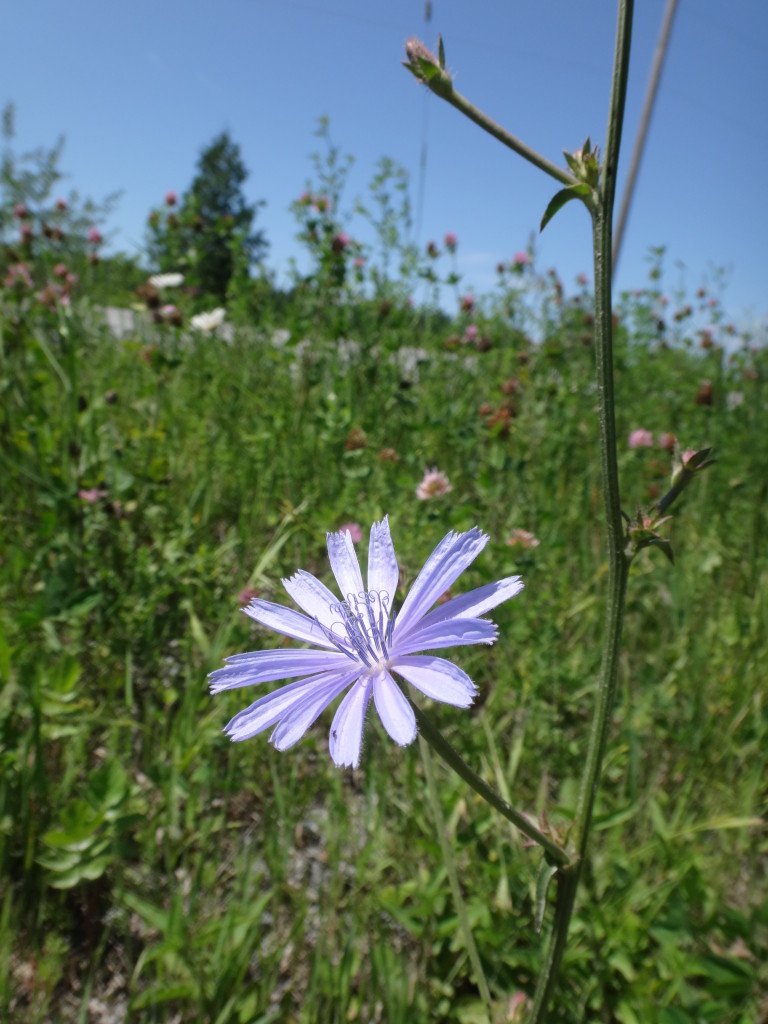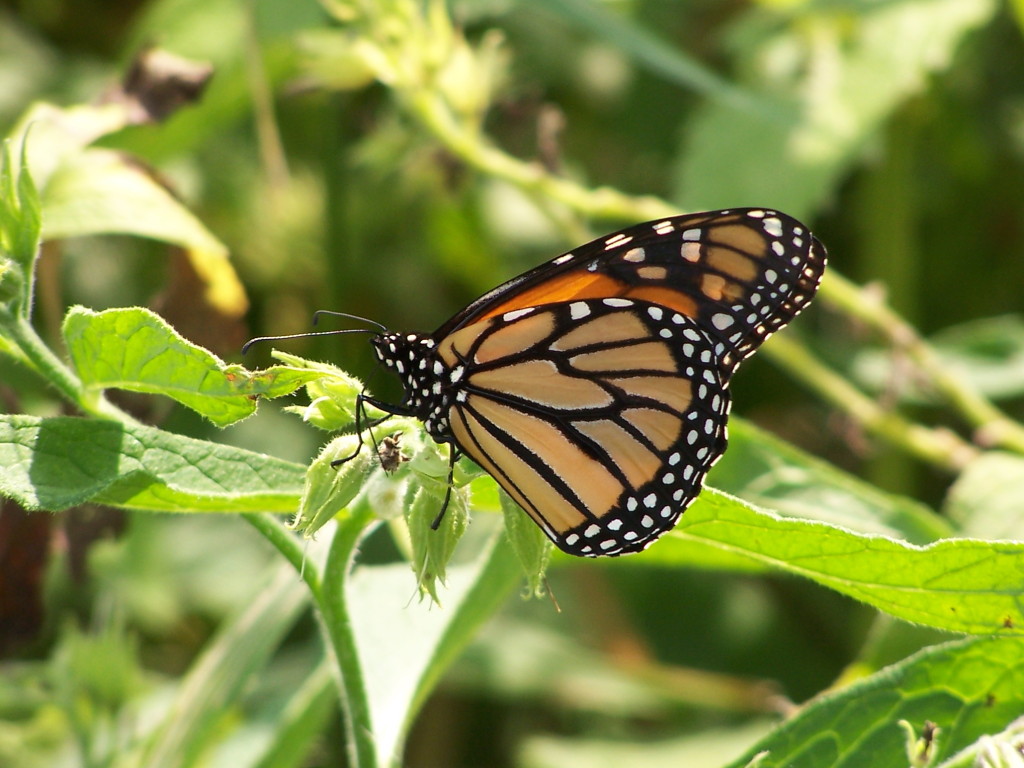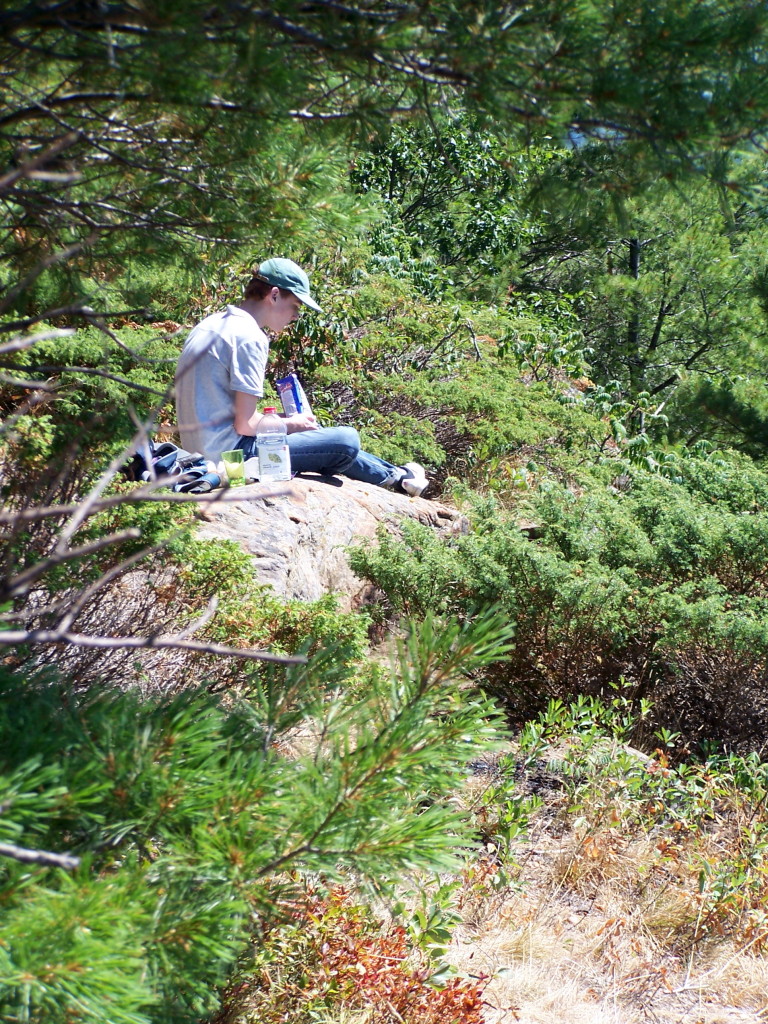“It’s easy to be a holy man on top of a mountain.”
I don’t know the origin of this quote, or where I heard it. But I recalled it a couple of weeks ago. I had guided my canoe gently on to a shallow mud flat at the edge of the Carp river, and then leaned back on the bench, resting my elbows against the gunnels and stretching my legs in exquisite pleasure at the change in position. A shrub leaned out from the shore, shading me. For as far as I could see along the straightened channel, tall, thick orchard grass bent from the bank toward the slow, clear water. Tufts of wild rice nodded slowly in the current. In places, a thin band of pickerel weed and water lilies edged out from the bank. Only the blue sky looked down on me; the rest of world lay beyond the green fringe.
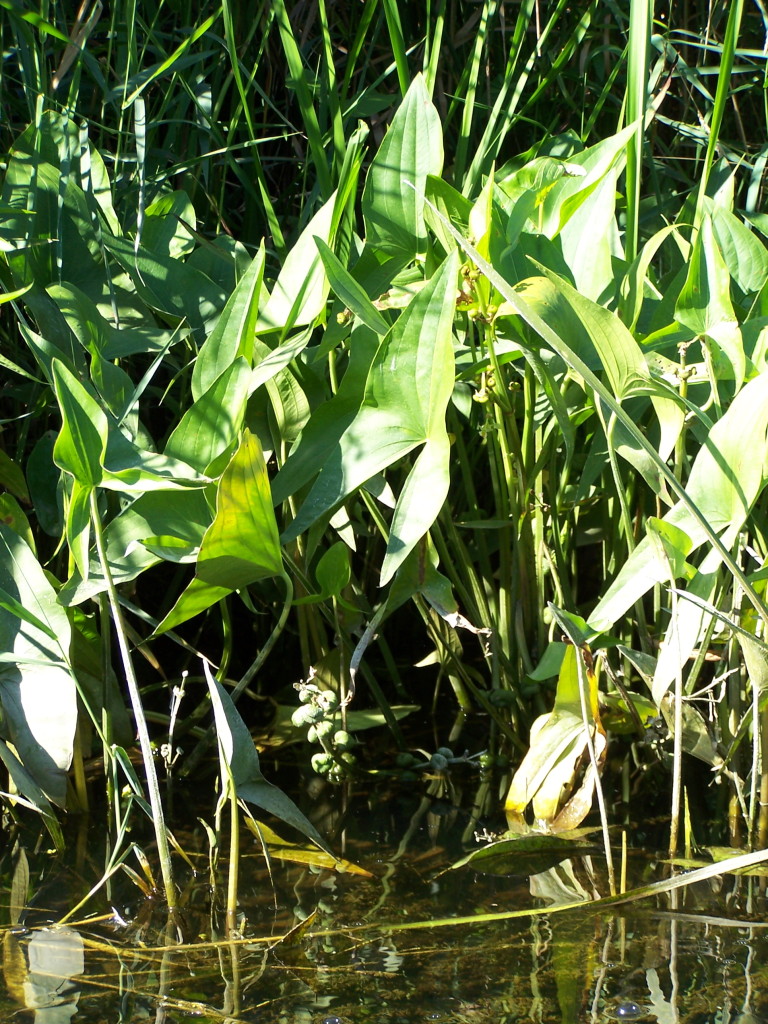
A flock of geese passed noisily overhead. Birds rustled and chipped furtively in the grass. Grasshoppers buzzed in the bordering fields. Dragonflies and damselflies danced over the water, their sharp metallic colors bright in the sunlight. Minnows and creek chubb swirled and darted in small schools.
I couldn’t entirely escape the human element. Distantly, I could hear traffic. A tractor growled somewhere behind me, maybe at the golf course farther upstream, or haying in one of the fields. A high, passing passenger jet sounded like a distant waterfall. But tucked under the lip of my narrow, green valley, I felt hidden from the world. I breathed in the rich perfume of late summer, and breathed out stale air, concerns and responsibilities.
Reflecting there, I thought how fortunate I was to have such a moment and such a place to spend it. I thought how rare it must be. How many knew of this place and had lingered in it? A few minutes earlier, I had watched a green heron feeding on the mud flat and in the reeds under the ragged bark of a huge, leaning crack willow. Oblivious to the quiet man in the still canoe, he had stalked the shallows for insects and frogs, pausing now and then to lift his head and bill, showing off the soft, brown streaking of his chest and neck. An intimate show, private.
I don’t know what meaning, if any, that moment held. But I have added it to a score of others to which I return in my memories and thoughts, when I need to find some distance from the noisy, crowded world about me.
